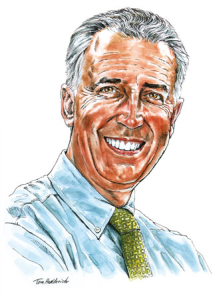In addition to serving food, restaurants also serve to measure the stature of entertainment executives. Restaurateurs are the first to recognize the execs’ positions and the first to acknowledge their power. Restaurant tables are the dining equivalent of corner offices with views of the park.

Restaurants in show biz are very important. When top-level executives are hired by big companies, their biggest perks are offices with views of the park and prime table spots in exclusive restaurants. (Years ago, another big perk was direct deposits for their compensation packages, but with the evolution of online banking, this privilege is now extended to all employees.)
The restaurant table, however, is still seen as an exclusive privilege since executives spend a lot of time socializing and having business lunches and dinners. To a certain extent, restaurants are extensions of their offices. But while offices are where business talks take place, restaurants are reserved for gossip, pleasantries, and some sort of psychoanalysis.
The location of the table inside the restaurant is just as important as getting a table. Some executives, especially those in Hollywood, prefer to be seated by the front door in order to see and be seen by all arriving diners. New Yorkers, on the other hand, prefer to stake their claims to back-of-the-wall tables, the better to be able to see everyone in the dining room without being seen themselves. (Tables near the servers’ stations, near the kitchen doors, or close to the restrooms are to be avoided at all costs, of course.) Also, while tables by the windows could be attractive for what restaurateurs call “good-looking people,” important executives tend to avoid them for security reasons.
For large gatherings, most executives prefer private rooms. For parties larger than three, they prefer to be seated at round tables so as to make it easier to talk to all the guests.
In these types of exclusive restaurants the maître d’ knows everything about the executives, including whether they are sitting with their spouses, significant others, secretaries, business associates, or honored guests. The maître d’ also knows their preferred dishes, their allergies, their pet peeves, and when to laugh at the same stale jokes.
If the restaurant table is first to indicate the stature of the executives, it’s also first to indicate their impending downfalls. A former top-level executive at NBC recalled how, after leaving the TV network, he couldn’t get his usual table at his favorite New York City restaurant, because, as the maître d’ graciously put it, the restaurant valued the company, not the individual.
This editorialist has never been important enough to stake a claim to any table in a restaurant, but has picked up several lessons to impress guests by observing many TV executives, such as Dick O’Leary (when he was president of ABC’s O&O TV stations) and Bruce Gordon (when he was president of Paramount International TV Distribution).
At a gathering of two or more guests, for example, the host (or one associate) would pretend to head to the restroom, but instead go to discreetly settle the bill, so that it wouldn’t be garishly paid at the table in front of guests. It’s also important to give the maître d’ extra tips in cash because they tend to have long and detailed memories. In addition, it is also imperative to never let any of the guests choose the wine — unless the host is prepared to pay for the most expensive bottle on the wine list, that is.
(By Dom Serafini)
Audio Version (a DV Works service)

Leave A Comment